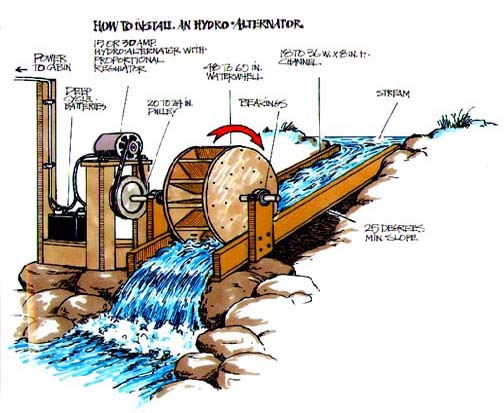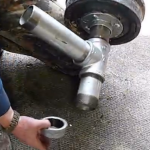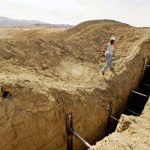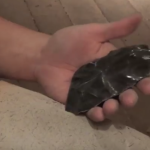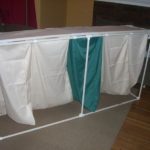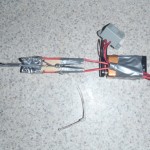Water wheels have been used for ages as a reliable and efficient source of power. If you are situated near a river, creek or stream with a stable amount of flowing water, you can benefit from utilizing this natural resource. It doesn’t take a lot to create a system that can provide a minor power solution that can keep your world moving even if the grid shuts down. Let’s take a look at the basic principles of how all water wheel systems work, and then we can talk about some basic design ideas.
The amount of power that you can generate depends on a number of factors. The size of the wheel, the capacity of the generator, the flow of water and the storage capacity that you have available. Simply put, the water wheel acts as an alternator in a vehicle. It continually charges the battery that in turn keeps the electrical system running. Most water wheel setups run a power line to a battery pack, and this is the easiest, least expensive and most practical solution for basic use.
However, it is possible to build an electrical system that will transfer power from the generator directly into your property. For purposes of this illustration, we will look at the basic design for a battery-powered system that you can use to power small items. This will make it easier to visualize how this system works and give you a chance to tinker around a bit without investing in additional equipment.
Choosing the Right Generator
You want a coil generator, similar to one that is found in vehicles. You can use a large generator from a vehicle, or you can find numerous other options on the market as well. Just remember that the output of power that you can create will depend on the flow of the water, design of the wheel and storage capacity that you have.
Building the Wheel
You need to create the frame for the wheel with an axle in the middle that will support the sprocket that will connect the chain to the generator. Some people use special wood that has been treated to marine-grade strength. Others use metal while PVC pipe is also a viable option. It all depends on your preferences and overall needs. Once the wheel has been created, you want to insert blades to catch the water and spin the wheel. Again, some people use PVC, others use aluminum, and wood will also get the job done. The idea is to tinker with a few different options until you find the most efficient configuration.
Connecting the Components
The frame that you build will need to hold the wheel in place while also allowing you to connect the belt from the gear on the wheel to the sprocket on the alternator. Some configurations include a flywheel that is offset from the center line in order to make more power as well. Just remember that everything must be mounted on the frame in perfect alignment so the chain that connects the components won’t wobble, become jammed or slip off the teeth of the sprockets.
How you choose to mount the wheel, stand and components will depend on the unique characteristics of your setup. This will require a little bit of planing and experimentation on your part, and it is recommended that you start small in order to get a feel for how the process unfolds.
Once all of the components have been connected, all you need to do is run cables from the generator to your batteries. Car or marine batteries work good for small to medium sized generators, and the consensus is that marine batteries will last longer. Don’t worry if the amount of electrical current that flows from the generator to the battery varies, as long as it doesn’t exceed its capacity.
The next step is to connect the batteries to a charge controller or inverter which will control power settings that will ultimately feed your appliances, radios or lighting. You can expect to be able to run a few lights, a television and a radio with a small system hooked into one or two batteries, but you can scale up as well to meet greater demand.
This is a general overview of how a water wheel system works, and it is very easy to find examples of more specific designs and create your own in just a few hours. Take the time to learn more about this fantastic power generating option, and you will be able to lower your electricity costs, reduce your reliance on the grid and enjoy clean and free energy as long as the water is flowing.




